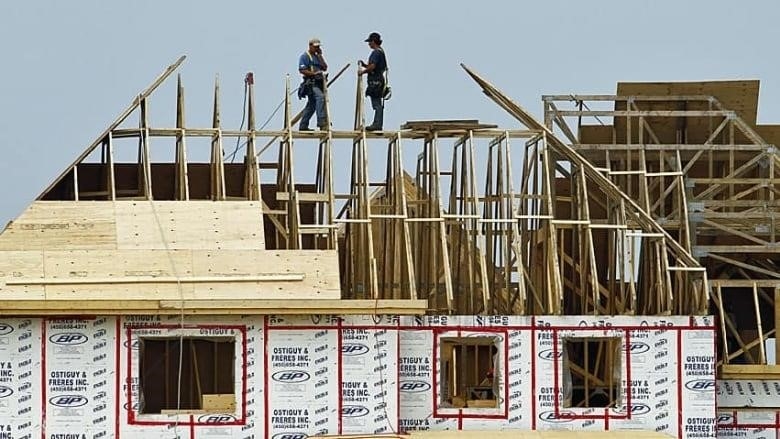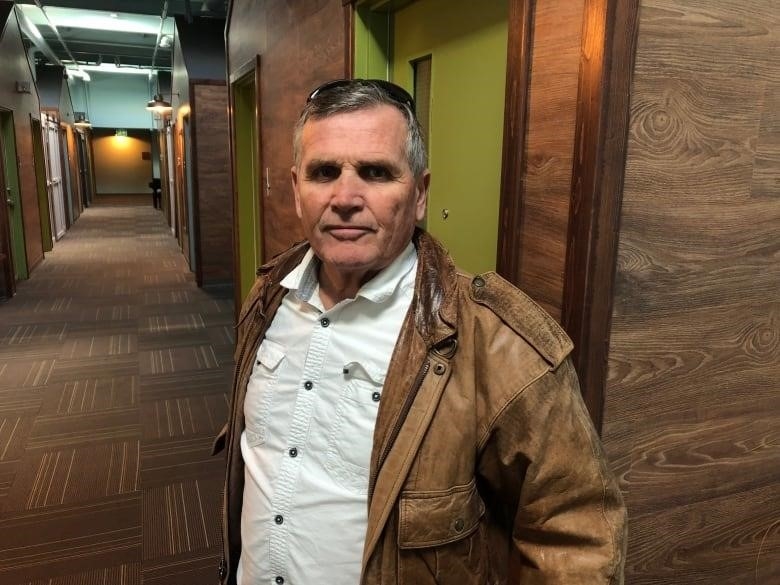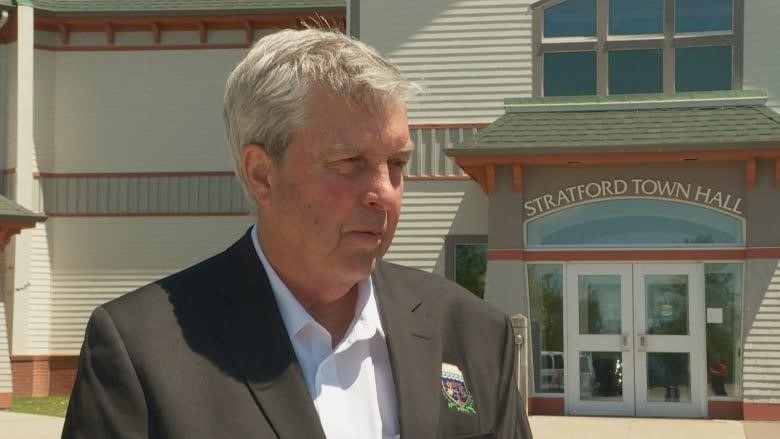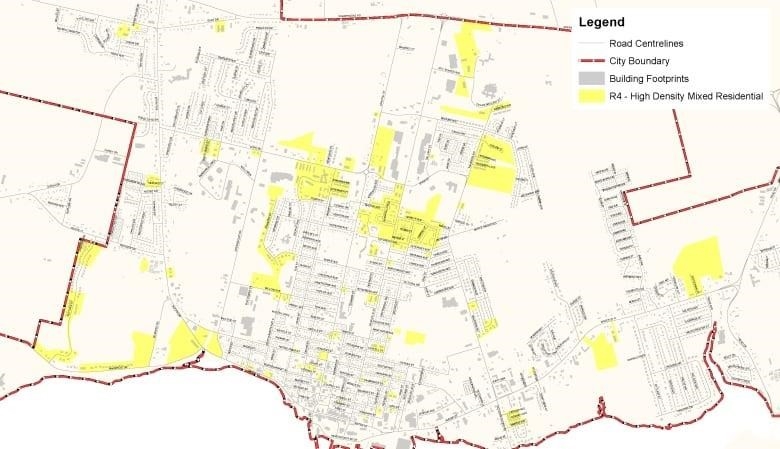
“It is almost impossible to get land that is zoned for multiple units.
The number of new apartment buildings on P.E.I. reached a peak years ago. This, along with the fast growth of the population, has led to a desperate need for more housing.
Most people agree that there is a “housing crisis,” but it’s hard to say when it started. The term “housing crisis” was first used in 2018, when the vacancy rate for apartments hit a record low of 0.3%.
The problem seems to come from the fact that the population is growing quickly and that builders can’t build new homes fast enough to keep up.
There is evidence that developers responded quickly to the need for apartments in that first year. But even though the housing crisis is still going on, things have slowed down in recent years.
Some people have blamed a lack of workers or trouble getting money, but the owner of Confederation Construction, Ajay Punnapadam, says his main problem is something else.
“We don’t have land,” said Punnapadam.

“There are no multi-unit lots available. It is almost impossible to get land that is zoned for more than one unit. “You might be able to get something like a triple or fourplex, but anything more than that is very, very hard.”
In 2018, when people started talking about a crisis, the number of new homes built on P.E.I. picked up, but they reached their peak in 2020. In 2022, there were 15% fewer homes finished, and the difference was especially noticeable in apartments, where the number of finished homes was almost cut in half.
Statistics Canada reports from this month show that there are early signs that 2023 could be even worse.
In the last three months of 2022, a lot less money was spent on new homes, and a lot fewer permits were approved for new homes.
Investment dropped to $93.3 million, which is the first time since 2018 that fourth-quarter investment on Prince Edward Island was less than $100 million.
When we look back over these five years of building permit data, we see that the most permits were given out in 2018, when 491 new homes, including 320 apartments, were built. In contrast, only 284 homes were given permits in 2022, and only 122 of them were apartments.
Last month, Housing Minister Matthew MacKay said that he thinks the low-interest loans that will be available in the fall will make a lot more people want to build on the island this spring.
Punnapadam, on the other hand, doesn’t think that political move will make much of a difference.
What good is getting the money if there is no land?— Developer Ajay Punnapadam
“What good is getting the money if there is no land?” he said.
“What will the money do if you don’t have land that is zoned for this kind of building?” “You won’t get anything out of it.”
Rezoning trouble
When Punnapadam started Confederation Construction in 2019, one of his first projects was a 12-unit apartment building near the Dr. John M. Gillis Memorial Lodge in Belfast.
The rezoning process took more than nine months. Peter Brown of Bayside Group said that this kind of hard and long rezoning process is not unusual.
Brown said, “I just won’t buy a piece of land that needs to be rezoned because of the NIMBY stuff that goes on.”

“Cities and council members will say, “Yes, we want growth” and “Yes, we want people,” but when voters show up in large numbers to oppose something, politicians usually side with the voters.”
Trying something ne
The Town of Stratford, which is the third largest town on the island, is in the middle of a project that it hopes will make these hearings go more smoothly.
Stratford is one of six places in Canada that are working with the Canada Mortgage and Housing Corporation on projects to try to build more homes faster.
Stratford is working on a new approval process that would change how residents are consulted about rezoning. At the moment, residents are usually shown a plan that looks like a done deal, as if the developer could start building the project tomorrow.

With a new method, people would be involved in the process much earlier.
Mayor Steve Ogden said, “The whole process starts with local residents and the developer sitting around a table at a workshop with a blank map of the area to be developed and a top map that shows all the forests, hills, and other features.”
“They ask the local people to tell them what areas they think should be kept and what areas they think would be good for development.” They also ask people to say what worries or fears they have so that they can be talked about.
As a federally funded project, the goal is to create a model for a new method that could be used in communities all over Canada.
Location, location, locatio
But Brown sees something else that is wrong. The land that could be used to build apartments is in the wrong place.
He said that stores, jobs, and other services should be close to apartments.
Brown said, “If I’m going to build apartments for seniors, I really want to put them near churches, banks, and coffee shops.”
Brown said that it was just a good plan. People who live in an apartment building near the center of town will use their cars less often or might even give up owning a car altogether. That means less traffic, less wear and tear on the streets, and less need for more and wider roads. Also, it means less pollution in a province where transportation is a big source of greenhouse gas emissions.
But that isn’t what is going on.
“Over the past 10 years, many of the guys have stopped going to places where they might get pushback from the public.” “They will build on the 20 acres outside of town where it is easiest,” said Brown.
“It’s probably not the best place to build, but it’s the easiest.”
Cities respon
The City of Summerside thinks it has done its part to make land available for high-density residential development.
“Right now, there is a lot of land that is not only zoned but also has streets,” said Aaron MacDonald, the city’s director of technical services.
That includes land along most of the waterfront, from east to west, as well as land in the city’s center and north.

MacDonald thinks that the land the city already has will be enough for a while. He said that a lot of developers are interested and that he thinks this year will be busy.
Councilwoman Alanna Jankov, who is chair of Charlottetown’s planning and heritage committee, said in a statement sent to CBC News that the city also thinks it has set aside enough land for development.
The market decides when it’s good to start building and when it’s time to stop.Alanna Jankov, a councilwoman in Charlottetown
Jankov said, “The market decides when conditions are good for building and when to stop.”
“We don’t have any information to show that space is a problem for planning applications.”
She said that Charlottetown is just starting to make a new official plan for how it will grow in the future.
Radical growt
Since a five-year plan for population growth was put in place in 2017, the province has grown quickly.
At the time, there were 150,000. It is now over 172,000. Planned growth has been doubled.
The five-year plan, which was meant to deal with the very real problems of an aging population and a lack of workers, ended last year. However, the PEI government is working on a new plan for the next few years.
The government says that making sure everyone has a place to live will be a bigger part of planning this time, which will probably mean changes for the people who live on the island now.
If you want to build high-density housing near services and jobs, you will probably have to replace some of the low-density housing that is already there. But Punnapadam said that rezoning some of these areas does not mean that people will have to leave their homes.
He said, “The property value is going to go up for sure.” “No one loses in this situation.” “It’s definitely a win-win situation for everyone involved.”
It might seem radical, but so does the growth that Prince Edward Island is seeing right now, and staying the same isn’t really an option.
“No one wants their life to be messed up.” They want to keep doing the same things they did yesterday and ten years ago. That is not planning, though. “That’s just looking back on it,” said Brown.
“You can’t build neighborhoods or a future on that.”
